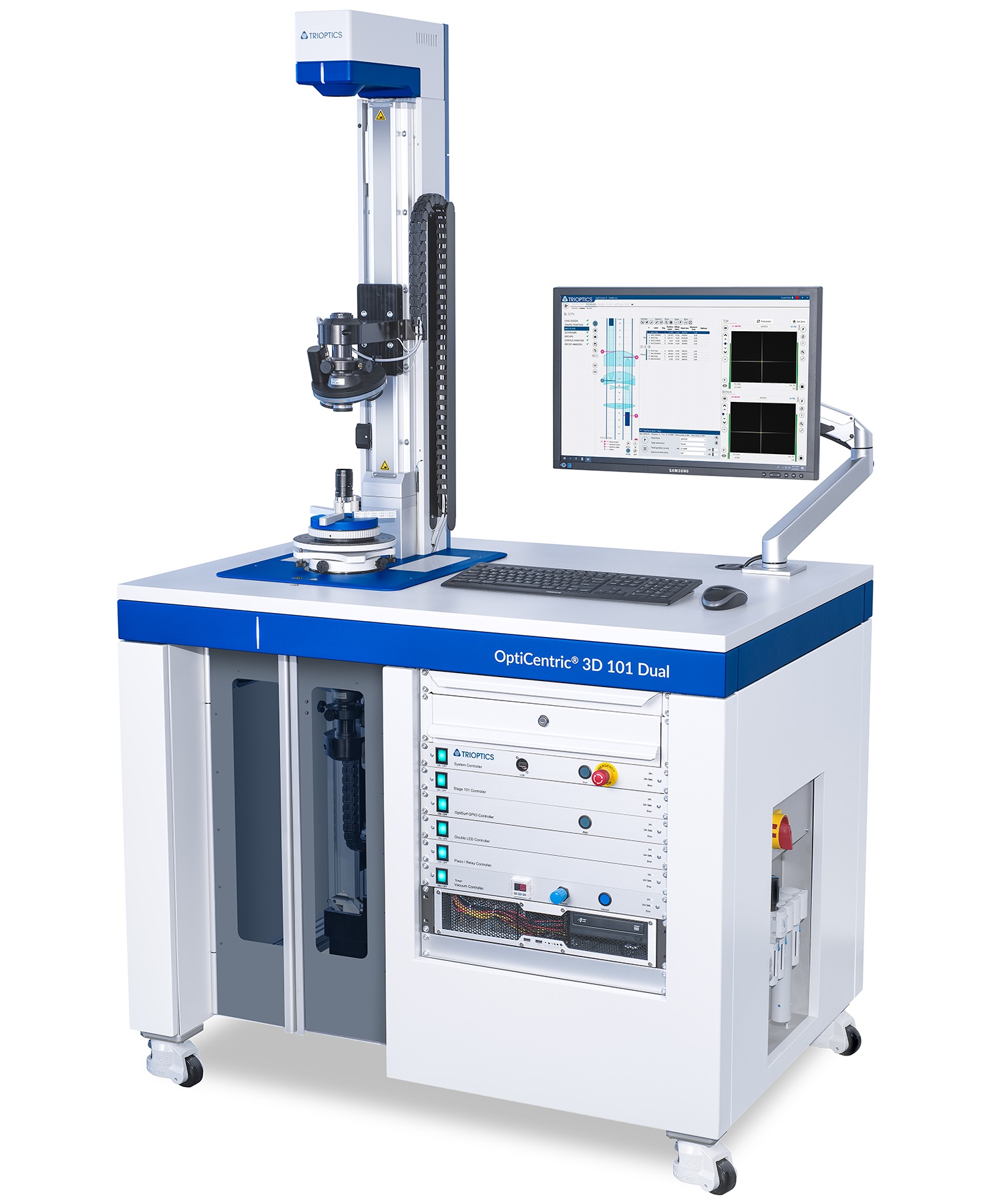July 8, 2021
TRIOPTICS launches the next generation of centration measurement systems with two measurement heads: the OptiCentric ® 101 Dual. It allows the measurement and alignment of complex lens assemblies with significantly reduced time requirements.
The centration measurement of multi-lens lenses often presents manufacturers with major challenges. Actual/target deviations of the initially measured lens surfaces can propagte to such an extent that, if applicable, rear lens surfaces can only be analyzed with a reduced measurement accuracy. On the other hand, the image planes of individual surfaces are often so unfavorably located that they cannot be measured with sufficient magnification (and thus accuracy). The OptiCentric® Dual from TRIOPTICS, which is equipped with two measurement heads – one above and one below the sample – has been providing a remedy for this for years. Thus, critical surfaces are generally easier to reach with the head positioned below. This also increases flexibility when measuring complex lens systems.
With the new OptiCentric® 101 series, the stability of the measurement head has been significantly increased and an improvement in the efficiency of the measuring process has been achieved. In continuation of the new OptiCentric® generation, these advantages are now also available with the OptiCentric® 101 Dual: the version with two measuring heads.
The special highlight of the OptiCentric® 101 Dual is that both measurement heads can be used simultaneously for measurement. This was achieved by introducing a stroboscope illumination. "For simultaneous measurement, it is important that each measurement head only registers the light that was sent by the respective head and is reflected by the sample. This task is solved by the new triggered stroboscopic illumination with its opposite clocking between the measurement heads," explains division manager Dr. Patrik Langehanenberg. Two surfaces are now being measured simultaneously during one sample rotation, since crosstalk between the measurement heads is ruled out. "The measurement time is reduced by up to half compared to the previous system. In the production testing of multi-lens systems, this time saving is an enormous advantage," says Patrik Langehanenberg.
Another important application made possible by this feature can be seen in lens alignment. Here, both the inclination and the displacement of the lens or objective axis are monitored simultaneously. Patrik Langehanenberg summarizes this as follows: "This means that the measurement and alignment of a lens in all 4 degrees of freedom – tilting and shifting in each of the x and y directions – is simultaneous, defined and, above all, efficient, since no iterations are required."















